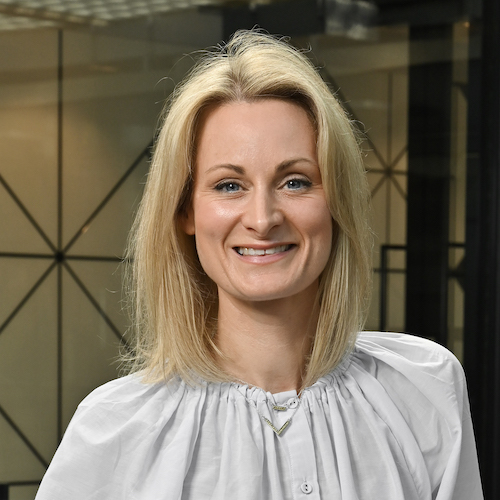Thought leadership management: who should own your company’s insight?
Emily Taylor Gregory
At FT Longitude, we often argue that thought leadership can create a clear and impactful voice for your brand.
But recently we have noticed a shift in our conversations: more and more companies want to make insight-led marketing more central to their overall mission as a business.
Thought leadership management has traditionally been seen as the sole domain of brand, marketing and comms teams – which have used it to support brand building and revenue generation. But now it is evolving from a strategic commercial and marketing activity to a wider expression of the company’s mission and values.
As companies take a firmer stance on topics such as sustainability, diversity and inclusion and the broader role of business in society, many are asking how they can use thought leadership to communicate a renewed sense of purpose.
But these shifts raise questions. Who within the organisation is ultimately responsible for thought leadership management? And is that changing?
Traditional teams: Brand and commercial objectives need sales and marketing
Our data on who directs thought leadership at the companies we work with shows that marketing, brand and communications teams still spearhead investing in thought leadership initiatives.
And from a traditional ‘mission and objectives’ point of view this makes a lot of sense: marketing, brand and comms teams – often a central resource in many organisations – have direct relationships with both client-facing teams and other employees.
If the goal for insight-led content is intrinsically linked with sales, there has to be strong alignment with account and business development teams. One of the best ways for a sales team to understand the initiatives is to work closely with marketing and contribute ideas and messaging to the campaigns from the start. This is perhaps the most democratic way to develop thought leadership ideas – a sideways operating model that pulls in and distils views from across the organisation.
And it is the sales team’s responsibility to help to communicate it. As a company’s most direct route to market, they talk to clients and prospects most often and will influence their perception of your brand and ultimately their buying decisions.
If the goal for companies investing in thought leadership is to develop PR-worthy content that builds brand awareness, then more senior members of the company are often involved in setting the overall direction, message and tone. Whilst the activity remains in the comms team domain, this approach typically tends to result in a more top-down approach when it comes to the high-level ideas that feed into the overall narrative.
Prioritising purpose: new objectives call for new leadership
Recently, the definition of a ‘brand’ has changed in the context of thought leadership. Companies are now becoming more vocal in expressing their purpose, and are using content and thought leadership as a way to communicate the message.
Taking a position on societal issues such as sustainability, diversity and inclusion, for example, is affecting who within the organisation gets involved in brand-related initiatives. As key contributors to a company’s vision and values, HR leaders, corporate and public affairs as well as investor relations are now joining the conversation.
Companies that recognise the opportunity to set a new purpose and strategic vision for the business will also require more ‘ownership’ of ideas for thought leadership far and wide across the entire senior leadership team. This will help to communicate these messages not just outwardly, but inwardly as well.
Using thought leadership to communicate a more clearly defined socio-political narrative also leads to a change in how you think about the audience: it is no longer just about the customer. Companies increasingly view their employees, investors and now wider policymakers and non-governmental organisations as the focus for campaigns.
How to stay coherent when there are multiple owners
For companies that have commercial and purpose-driven objectives, we recommend creating a thought leadership governing board. This is a centralised team, led by marketing, that includes representatives from PR, HR, Corporate Affairs and Investor Relations – all of whom feed into the overall strategy.
This will help to ensure there is alignment on the objectives; that the right messages are prioritised; and that there is cohesion across campaigns and the overall narrative.
Bringing together voices and perspectives from around the business might sound like it would lead to ‘design by committee’, but involving a new, wider mix of people from across your organisation will allow marketing teams to remain central to the strategy while advancing the agenda.
In our experience, marketing teams are perfectly positioned to corral people from across the organisation and steer them toward a common goal. With this unity, marketing leaders can rise to the challenge of putting purpose at the heart of thought leadership management.
Read more about why alignment is your best thought leadership bet.
Speak to the team
We’ll help you to navigate and overcome any challenges you currently face and learn how to get more out of your content.
Book a meeting
About the author: Emily Taylor Gregory
Emily is our marketing director, responsible for the brand, marketing and communications strategies for FT Longitude. Emily leads our content and events programmes, as well as our speaking engagements and PR activity, working closely with our editorial and research teams to develop and promote insight and best practice at the cutting edge of thought leadership.
Before joining FT Longitude, Emily spent 14 years working in various marketing roles in the publishing and technology sectors.
 |
Tel:
+44 (0)20 7873 4770
|
Tel:
+44 (0)20 7873 4770


